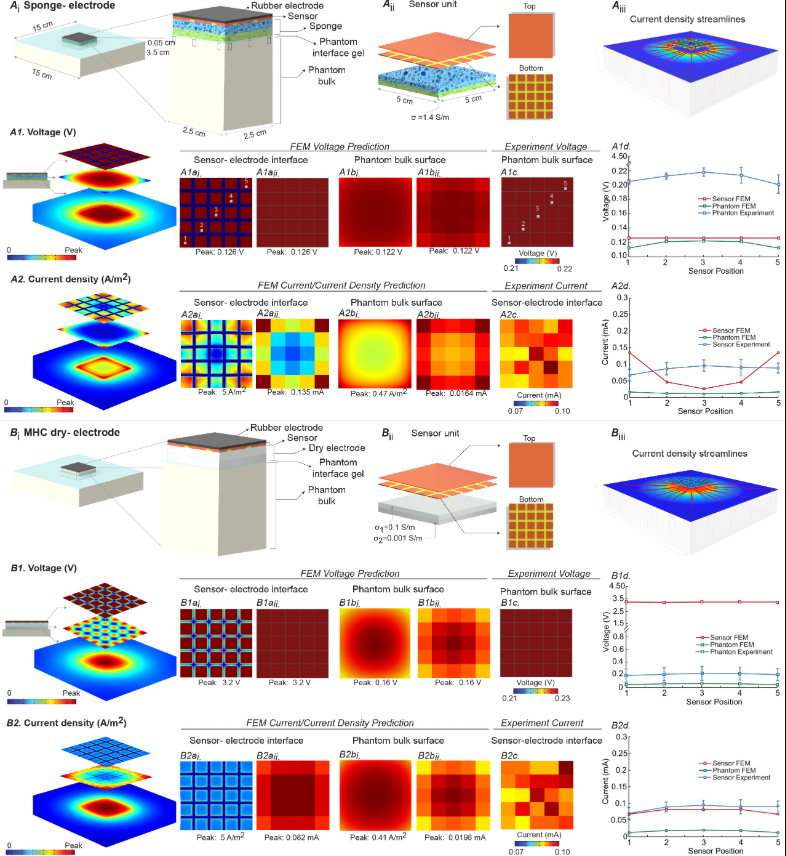New Paper: Dry tDCS: Tolerability of a novel multilayer hydrogel composite non-adhesive electrode for transcranial direct current stimulation
Khadka N, Borges H, Zannou AL, Jang J, Kim B, Lee K, Bikson M
Download: PDF published in Brain Stimulation– DOI
Abstract
The adoption of transcranial Direct Current Stimulation (tDCS) is encouraged by portability and ease-of-use. However, the preparation of tDCS electrodes remains the most cumbersome and error-prone step. Here, we validate the performance of the first “dry” electrodes for tDCS. A “dry electrode” excludes 1) any saline or other electrolytes, that are prone to spread and leaving a residue; 2) any adhesive at the skin interface; or 3) any electrode preparation steps except the connection to the stimulator. The Multilayer Hydrogel Composite (MHC) dry-electrode design satisfied these criteria. Over an exposed scalp (supraorbital (SO) regions of forehead), we validated the performance of the first “dry” electrode for tDCS against the state-of-the-art conventional wet sponge-electrode to test the hypothesis that whether tDCS can be applied with a dry electrode with comparable tolerability as conventional “wet” techniques? MHC dry-electrode performance was verified using a skin-phantom, including mapping voltage at the phantom surface and mapping current inside the electrode using a novel biocompatible flexible printed circuit board current sensor matrix (fPCB-CSM). MHC dry-electrode performance was validated in a human trial including tolerability (VAS and adverse events), skin redness (erythema), and electrode current mapping with the fPCB-CSM. Experimental data from skin-phantom stimulation were compared against a finite element method (FEM) model. Under the tested conditions (1.5 mA and 2 mA tDCS for 20 min using MHC-dry and sponge-electrode), the tolerability was improved, and the erythema and adverse-events were comparable between the MHC dry-electrode and the state-of-the-art sponge electrodes. Dry (residue-free, non-spreading, non-adhesive, and no-preparation-needed) electrodes can be tolerated under the tested tDCS conditions, and possibly more broadly used in non-invasive electrical stimulation.
